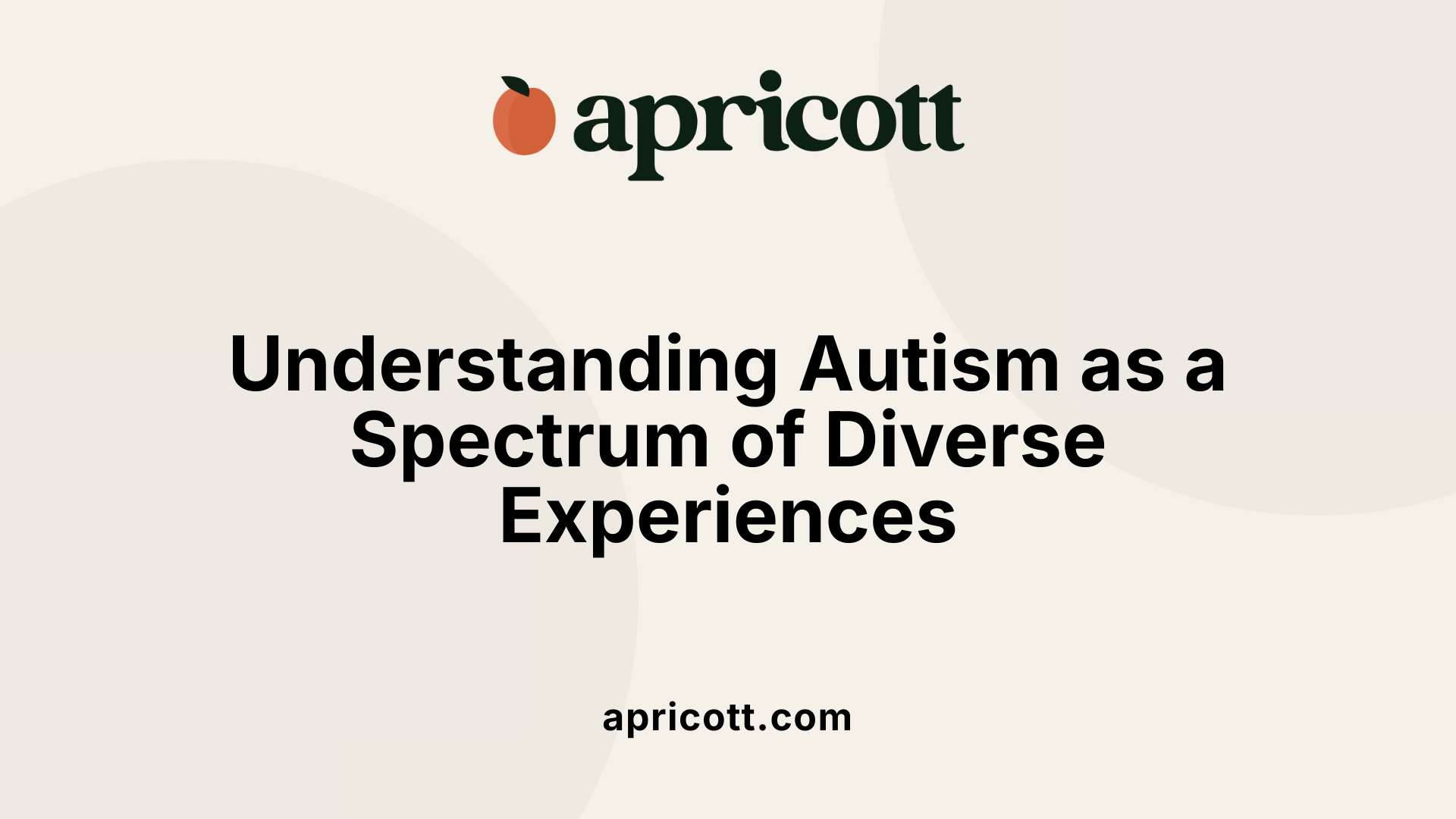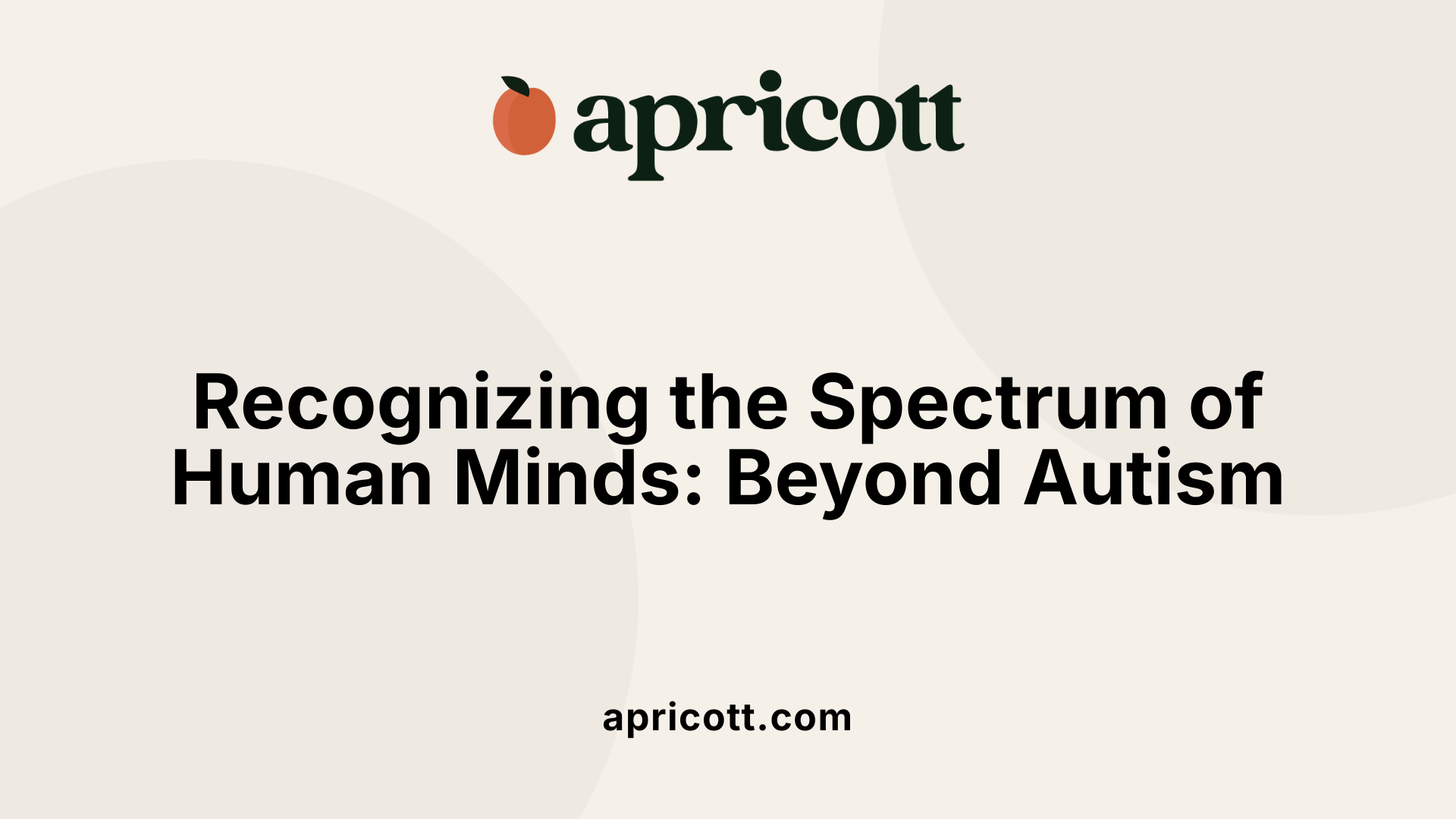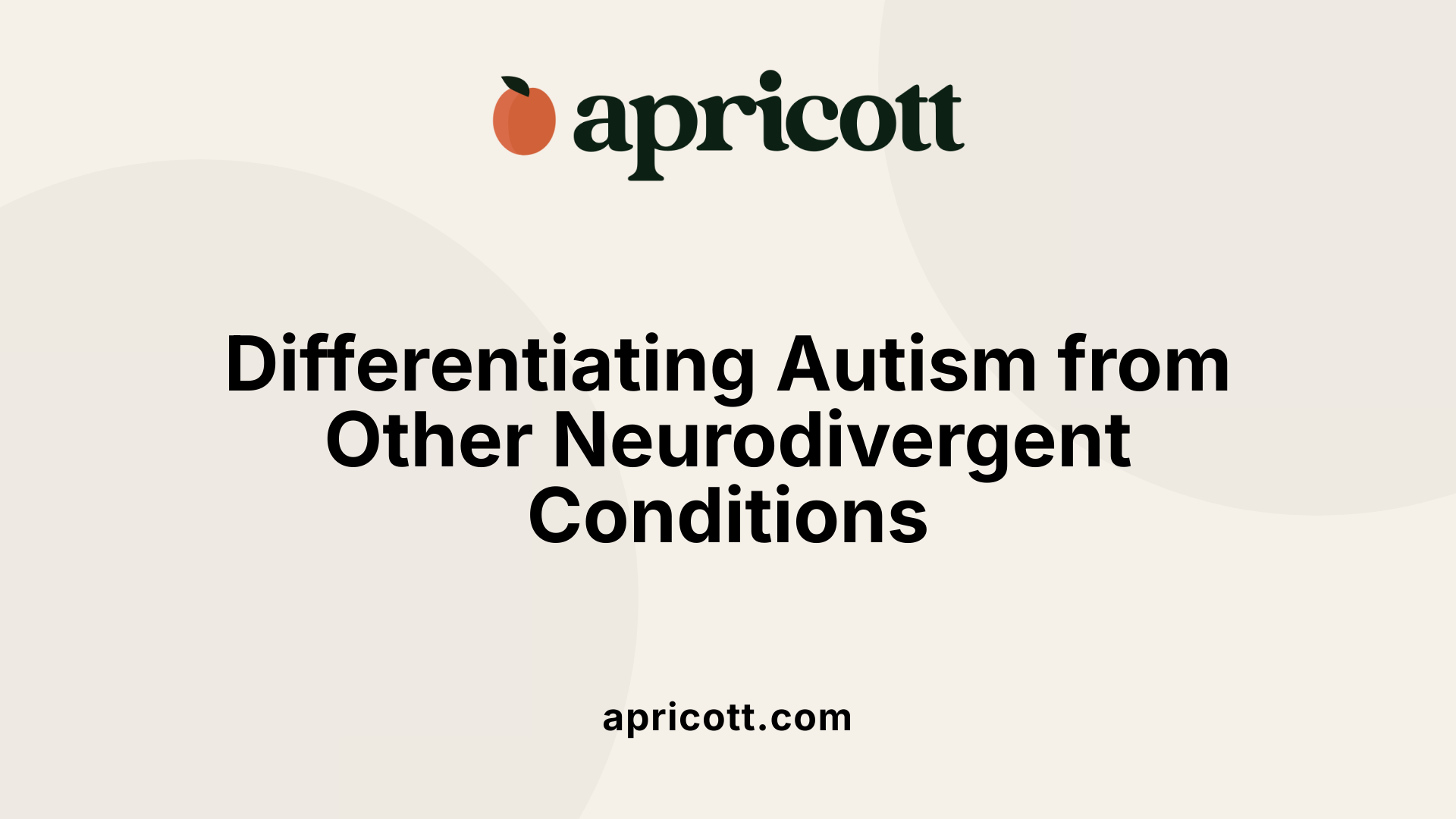August 11, 2025
Understanding the Diversity of Autism and Neurodiversity
The question 'Is everyone on the autism spectrum?' often sparks curiosity and misconceptions about neurodiversity. To address this, we explore what autism truly entails, how it relates to broader neurodivergent conditions, and why understanding this spectrum is crucial for fostering acceptance and support for all individuals regardless of where they fall on the spectrum.
Autism Spectrum Disorder, commonly known as autism, describes a broad range of neurodevelopmental conditions affecting how the brain develops and functions. These conditions influence communication, social interaction, and behavior, manifesting in diverse ways across individuals. People with ASD often experience differences in social cues, speech development, and sensorimotor sensitivities. The term "spectrum" underscores this variety, indicating that autism is not a single condition but a wide range of experiences and abilities.
Autism is characterized by a vast array of profiles, where each person’s strengths and challenges are unique. Some autistic individuals have significant difficulties with communication and daily living, while others might excel in areas such as logical reasoning or visual thinking. Many have intense interests and prefer routines, but these traits can look very different from person to person.
Different levels of support are often needed depending on the individual's abilities, and these can change over time. Autism's diversity means that it encompasses individuals from all racial, ethnic, and socioeconomic backgrounds, with different cognitive profiles, sensory sensitivities, and communication styles.
Signs of autism typically emerge early in life, sometimes as early as 18 months. Common indicators include challenges in making eye contact, understanding social cues, and responding to their name. Repetitive behaviors such as hand-flapping, lining up objects, or intense focus on specific interests are also characteristic.
Sensory sensitivities are common; some autistic people may be hyper-sensitive or under-sensitive to sounds, lights, textures, and touch. They may use coping mechanisms like covering their ears or avoiding certain sensations.
Communication styles vary widely—while some autistic individuals speak fluently, others might be nonverbal and communicate through alternative methods like sign language or assistive technology. Repetitive speech patterns, echolalia, and unusual intonations can also be signs.
Understanding autism as a spectrum helps to appreciate that everyone’s experience is different. It emphasizes that each person has their own unique way of thinking, feeling, and interacting with the world, with strengths that include honesty, focus, and detailed knowledge about their interests. Recognizing this diversity fosters respect and support tailored to individual needs.
Autism spectrum disorder (ASD) is a complex neurodevelopmental condition marked by a diverse range of behaviors and abilities. The core features include challenges with social communication and interaction, such as difficulty making eye contact, understanding social cues, and forming relationships. Many individuals also exhibit restricted or repetitive behaviors, like hand-flapping, rocking, insisting on routines, or developing intense interests.
Signs of autism typically appear early, often within the first year of life, but some traits may become more noticeable later, including in adulthood. Sensory sensitivities—either heightened or diminished responses to sounds, lights, textures, or physical touch—are common. Communication styles are highly varied; some autistic individuals speak fluently, while others may be nonverbal or communicate via alternative methods like sign language or AAC devices.
The severity of symptoms differs widely. Some individuals need substantial support in daily life, while others require little to no assistance. Diagnosis relies on behavioral observations and assessments focusing on social skills, communication, and repetitive behaviors, as there is no single medical test for ASD.
Autism does not follow a linear spectrum from low to high but encompasses a wide array of profiles. Some people on the spectrum have average or above-average intelligence and excel in logical, visual thinking or have deep expertise in certain interests. Others may face learning disabilities, intellectual challenges, or co-occurring conditions like ADHD or anxiety.
The diversity in abilities is often represented by a 'spiky profile,' where strengths and challenges coexist. For example, an individual might be highly focused, honest, and detail-oriented but struggle with social cues and sensory sensitivities.
Within autism, no two individuals experience the condition in precisely the same way. This diversity reflects how autism is a spectrum, with each person situated uniquely based on their combination of traits, strengths, and difficulties. Some may engage readily with others, while some prefer solitude. Their interests might be broad or intensely focused on specific topics.
Recognizing this variety is important in supporting autistic individuals effectively and respecting their differences. The spectrum is often visualized as a color wheel, demonstrating the wide range of abilities and challenges spanning social skills, communication, sensory processing, and interests.
| Aspect | Variability | Example Traits | Additional Information |
|---|---|---|---|
| Communication | Fluent or nonverbal | Using AAC, sign language | Significantly different ways to interact |
| Cognitive skills | Range from intellectual disabilities to above-average abilities | Deep focus or expertise | Abilities are highly individualized |
| Sensory Processing | Hypersensitive or hyposensitive | Covering ears, seeking sensory input | Alters comfort and behavior |
| Behavior Patterns | Repetitive, routine-based, or flexible | Special interests, routines | Personal strengths or challenges |
Autism's true nature lies in its diversity, emphasizing that it is not a single condition but a vast range of experiences. Supporting each individual means acknowledging this variability and respecting their unique strengths and challenges.

While many people may exhibit behaviors or traits often associated with autism—such as a preference for routines, sensory sensitivities, or difficulty reading social cues—this does not mean that everyone has some traits of autism. Autism is a spectrum condition, which means that each individual experiences it differently, with a unique combination of strengths and challenges.
Autism presents in a wide variety of ways, and not all signs are visible or consistent across different people. Some may have significant communication difficulties and sensory sensitivities, while others may excel in logical thinking, memory, or specific interests. Many individuals engage with routines or have intense focus, but these behaviors are not exclusive to autism.
It is important to understand that a formal diagnosis of autism spectrum disorder (ASD) is based on specific developmental criteria observed over time by clinicians. These criteria include particular patterns of social interaction, communication, and behavior that are distinct from typical variations.
In the general population, traits associated with autism are sometimes seen in varying degrees, but this does not mean they have the disorder. Many people without autism may occasionally have routines or preferences that resemble autistic behaviors, but this alone does not qualify them for a diagnosis.
Therefore, it is a misconception to believe that everyone has some traits of autism. While many may share certain characteristics to different extents, autism is a diverse condition, and only those meeting the clinical criteria are considered on the spectrum.

Neurodiversity is a concept that recognizes and celebrates the natural variation in human brain functions and cognitive styles. It emphasizes that differences in how people think, learn, and interact are part of the human experience. Instead of viewing these differences as disorders or deficits, neurodiversity promotes acceptance and inclusion, highlighting the richness that diversity brings to society.
The neurodiversity movement encompasses many conditions, such as autism, ADHD, dyslexia, dyspraxia, and more. These are different ways the brain can develop and operate. Each condition involves unique strengths and challenges. For example, autistic individuals often have heightened focus on specific interests, excellent pattern recognition, or deep reasoning skills. Similarly, people with dyslexia may have exceptional creativity or problem-solving abilities.
Autism is part of the broader neurodiversity concept. It refers to a range of neurodevelopmental differences characterized by distinct ways of thinking, feeling, communicating, and behaving. However, not everyone falls on the autism spectrum or identifies as autistic.
Neurodiversity as a whole includes many types of neurological differences, not just autism. It promotes the idea that all brains are diverse and valuable, in contrast to age-old notions that some ways of thinking are normal while others are abnormal.
While autism is one of many conditions within this spectrum, the term 'neurodiversity' itself embraces the entire spectrum of human cognitive variation. It emphasizes acceptance rather than categorization, encouraging a society where all types of minds are appreciated.
| Aspect | Explanation | Additional Details |
|---|---|---|
| Scope of neurodiversity | Broad concept including multiple conditions | Encompasses autism, ADHD, dyslexia, and more |
| Autism's place within it | One part of neurodiversity | A neurodevelopmental condition with a wide range of experiences |
| Does everyone have autism? | No | Autism is specific, but everyone can be neurodiverse in different ways |
| Goal | Acceptance and inclusion | To see neurological differences as natural and valuable |
Understanding these differences promotes a more inclusive society that values the unique contributions of every individual.

Yes, several neurodivergent conditions are related to or can be mistaken for autism due to overlapping characteristics. These include attention-deficit/hyperactivity disorder (ADHD), dyslexia, sensory processing disorder (SPD), dyspraxia, and fetal alcohol spectrum disorder (FASD). Each of these conditions involves differences in brain function and behavior, fitting into the broader understanding of neurodiversity, which recognizes natural variations in human cognition.
While each condition has its own unique set of symptoms, they can share common features. For example, both autism and ADHD may involve challenges with attention, impulsivity, or sensory sensitivities. Dyslexia primarily affects reading and writing skills, but it can also involve differences in processing language and sensory input, which may sometimes resemble certain autistic traits.
These conditions can also occur together in individuals, complicating diagnosis but highlighting the complex and overlapping nature of neurodiversity. It's important to note that none of these conditions are deficits but rather variations in brain wiring that influence how individuals think, learn, and interact.
Understanding these overlaps and distinctions is essential for providing appropriate support. Accurate diagnosis helps ensure individuals receive tailored interventions and accommodations. Moreover, recognizing that neurodivergent conditions are part of natural human diversity fosters respect, reduces stigma, and promotes acceptance.
For further insights into these related conditions, searching the phrase 'Related neurodivergent conditions' can provide valuable resources and information. Embracing this perspective helps us appreciate the diversity of human cognition and the importance of respectful language when discussing neurodiversity.
Recognizing that autism is a spectrum with diverse experiences is fundamental to fostering inclusivity and understanding. While not everyone is on the autism spectrum, appreciating the broad concept of neurodiversity helps society embrace individual differences as natural and valuable aspects of human variation. By dispelling myths and misconceptions, we advocate for a world where all neurocognitive differences are acknowledged, respected, and supported, allowing everyone to thrive according to their unique strengths and needs.